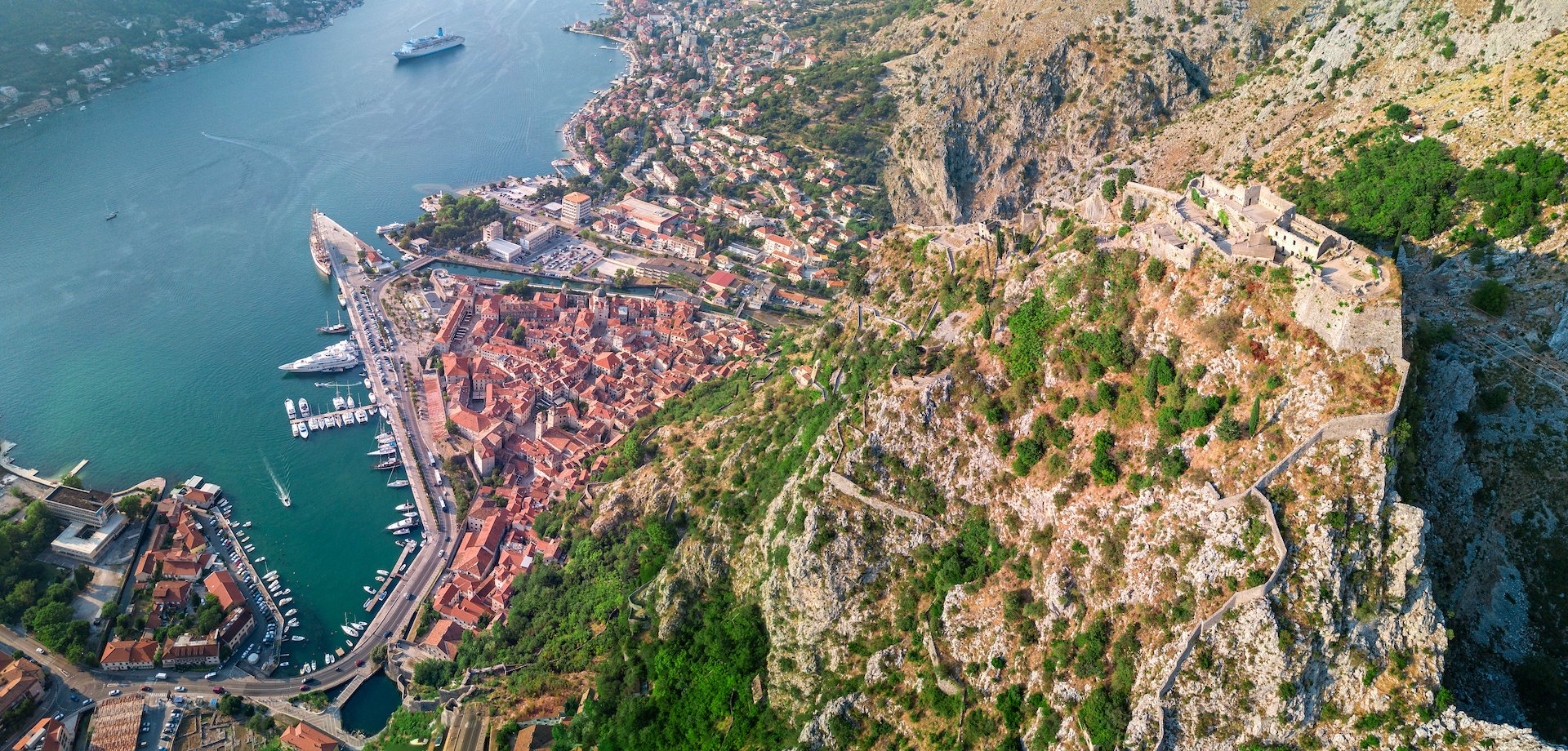Location
Nestled on Montenegro's Adriatic coast, Kotor is a stunning town with a rich history. Set in the Bay of Kotor, often called Europe's southern fjord, it combines natural beauty and heritage to attract global visitors. Kotor, in Montenegro's southwest, is nestled within the Bay of Kotor, an awe-inspiring Adriatic Sea inlet known for its UNESCO World Heritage status, stunning landscapes, and cultural diversity.
Bit of history
Kotor's history is a tapestry woven with threads of various civilizations, each leaving its mark on the town's architecture, culture, and identity. Its roots can be traced back to ancient times when it was settled by the Romans, known then as "Acruvium." Over the centuries, Kotor was ruled by various powers, including the Byzantines, Venetians, and Ottoman Empire, all of which contributed to its unique character.
The town's well-preserved medieval old town often likened to a maze of narrow cobblestone streets and squares, stands as a testament to its rich history. Encircled by robust stone walls that date back to the Venetian era, Kotor's old town is a living museum, home to stunning architecture, historic churches, and picturesque piazzas.
Hint: try to find out the meaning of the old Venetian saying: ‘’Tu me costi come i muri de Cattaro’’.
Exploring Old Town
Kotor's Old Town is the heart and soul of this enchanting coastal destination. Stepping into its historic streets is like taking a journey back in time, where every corner holds secrets of centuries past. Here, we delve into the captivating allure of Kotor's Old Town and all that it has to offer.
Architectural Marvels
One of the most striking features of Kotor's Old Town is its well-preserved medieval architecture. Enclosed by sturdy Venetian walls, the labyrinthine network of cobblestone streets is lined with charming stone houses, centuries-old churches, and elegant squares. Highlights include:
St. Tryphon's Cathedral: This Roman Catholic cathedral, built in 1166 (first church at the same place was built in 809), is a masterpiece of Romanesque architecture and a symbol of Kotor. St Tryphon is patron of city of Kotor.
Clock Tower: The iconic Clock Tower, rising above the town square, is a prominent landmark and offers panoramic views of the surrounding area. Fun fact: it is leaning towards the Main gate, around 2%.
Pillar of shame: Standing just in front of the Clock Tower it used to be used as a punishment for minor criminal offenses in the past. For example, if you stole something, you could be sentenced to spend a couple of hours tied to the pillar, with your offense written above. That way everyone would know what you have done. We are thinking of making a petition to bring it back to function, what do you think?
Square of Arms (Trg od Oružja): Same as with other squares in the town (Piazza of milk, Piazza of salad), it got its name from its main purpose. Arms (guns) for town defense used to be stored in the building where our Loft apartment is. Pretty amazing.
Today, it is a bustling square surrounded by cafes and restaurants, making it an ideal spot to enjoy a cake or coffee while people-watching. Our recommendation is to try traditional Kotorska krempita in Forza Cafe.St. Luke's Church: A charming small church is known for its beautiful frescoes and serene atmosphere. One of two Orthodox churches in the town.
St Nicola’s Church: The biggest church in town, easily recognizable by the big Serbian flag hanging over it. Why Serbian? It’s part of the Serbian Orthodox church, the biggest religious community in Montenegro. Explanation of this includes some history classes, so we will skip it this time.
We advise you to discover more with a great city guide, Vanja! Let us know if you’re interested and we could organize a group tour together!
Nest survival guide


